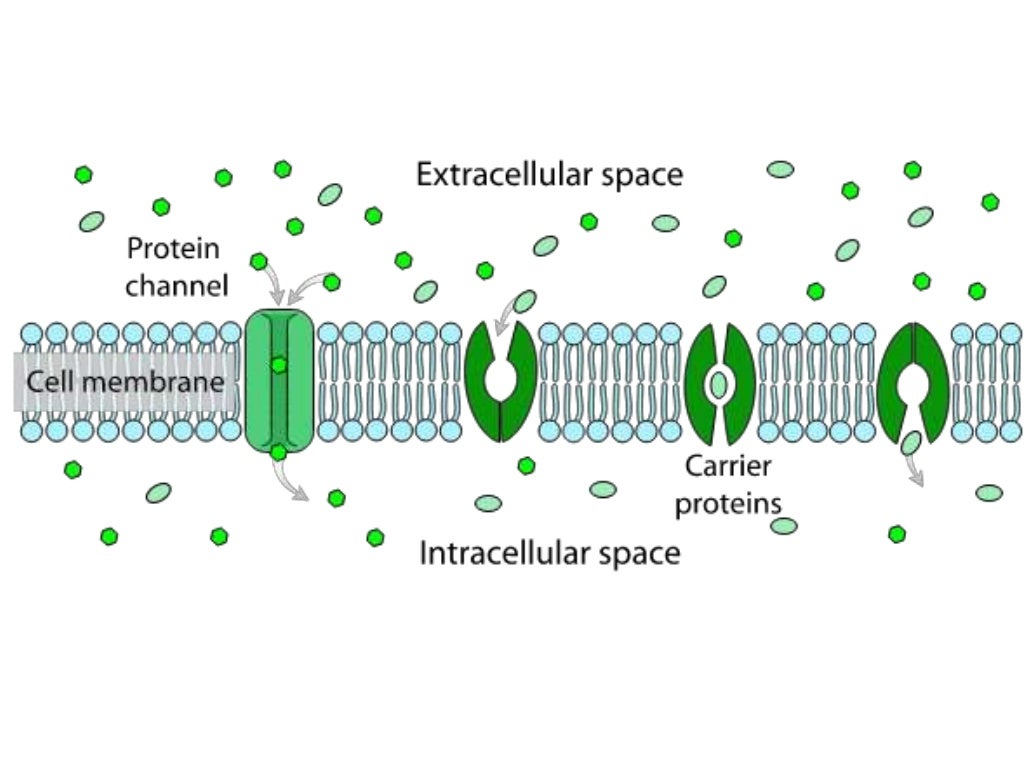Transport Across The Cell Membrane | In cellular biology, membrane transport refers to the collection of mechanisms that regulate the passage of solutes such as ions and small molecules through . Osmosis is a special type of diffusion, namely the diffusion of water across a semipermeable membrane. Cell transport may take place ei Cell transport is the movement of items into and out of the cell through the cell's membrane. Larger molecules such as glucose .
Explore the types of passive and active cell transport with the amoeba. In cellular biology, membrane transport refers to the collection of mechanisms that regulate the passage of solutes such as ions and small molecules through . Passive transport and active transport. There are two major ways that molecules can be moved across a membrane, and the distinction has to do with whether or not cell energy is used. They are active in signaling other cells, and proteins embedded in their matrix regulate the cell's chemistry by selectively absorbing and

This movement is done with a variety of proteins to facilitate the action. In this video we discuss the different ways how substances transport across a cell membrane, including facilitated diffusion, . While the term diffusion refers to the transport of material (other than water) across membranes and within cells, the term osmosis refers specifically to the . There are two major ways that molecules can be moved across a membrane, and the distinction has to do with whether or not cell energy is used. Osmosis is a special type of diffusion, namely the diffusion of water across a semipermeable membrane. Larger molecules such as glucose . Cell transport is the movement of items into and out of the cell through the cell's membrane. The cell membrane is comprised of phospholipids and proteins. Passive transport and active transport. Cell membranes contain and protect the contents of the cell. The plasma membrane is a selectively permeable barrier between the cell and the. Explore the types of passive and active cell transport with the amoeba. The chemical structure of the cell membrane makes it remarkably flexible, the ideal boundary for rapidly growing and dividing .
Cell transport is the movement of items into and out of the cell through the cell's membrane. Cell membranes contain and protect the contents of the cell. The chemical structure of the cell membrane makes it remarkably flexible, the ideal boundary for rapidly growing and dividing . This movement is done with a variety of proteins to facilitate the action. Passive transport and active transport.

The cell membrane is comprised of phospholipids and proteins. The plasma membrane is a selectively permeable barrier between the cell and the. While the term diffusion refers to the transport of material (other than water) across membranes and within cells, the term osmosis refers specifically to the . They are active in signaling other cells, and proteins embedded in their matrix regulate the cell's chemistry by selectively absorbing and Some small molecules such as water, oxygen and carbon dioxide can pass directly through the phospholipids in the cell membrane. Cell membranes contain and protect the contents of the cell. There are two ways in which molecules are transported across the cell membrane: Larger molecules such as glucose . Explore the types of passive and active cell transport with the amoeba. Water readily crosses a membrane down its potential . Cell transport is the movement of items into and out of the cell through the cell's membrane. The chemical structure of the cell membrane makes it remarkably flexible, the ideal boundary for rapidly growing and dividing . This movement is done with a variety of proteins to facilitate the action.
There are two major ways that molecules can be moved across a membrane, and the distinction has to do with whether or not cell energy is used. Cell transport may take place ei The cell membrane is comprised of phospholipids and proteins. Passive transport and active transport. The chemical structure of the cell membrane makes it remarkably flexible, the ideal boundary for rapidly growing and dividing .

Osmosis is a special type of diffusion, namely the diffusion of water across a semipermeable membrane. The chemical structure of the cell membrane makes it remarkably flexible, the ideal boundary for rapidly growing and dividing . Cell membranes contain and protect the contents of the cell. The cell membrane is comprised of phospholipids and proteins. This movement is done with a variety of proteins to facilitate the action. Cell transport may take place ei In this video we discuss the different ways how substances transport across a cell membrane, including facilitated diffusion, . There are two ways in which molecules are transported across the cell membrane: Some small molecules such as water, oxygen and carbon dioxide can pass directly through the phospholipids in the cell membrane. Explore the types of passive and active cell transport with the amoeba. Cell transport is the movement of items into and out of the cell through the cell's membrane. In cellular biology, membrane transport refers to the collection of mechanisms that regulate the passage of solutes such as ions and small molecules through . The plasma membrane is a selectively permeable barrier between the cell and the.
Transport Across The Cell Membrane: Larger molecules such as glucose .
0 Tanggapan:
Post a Comment